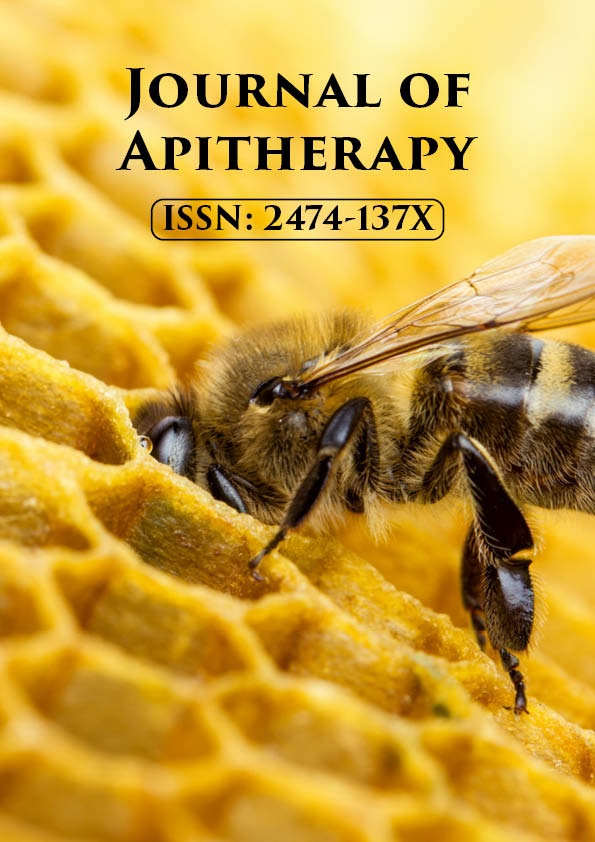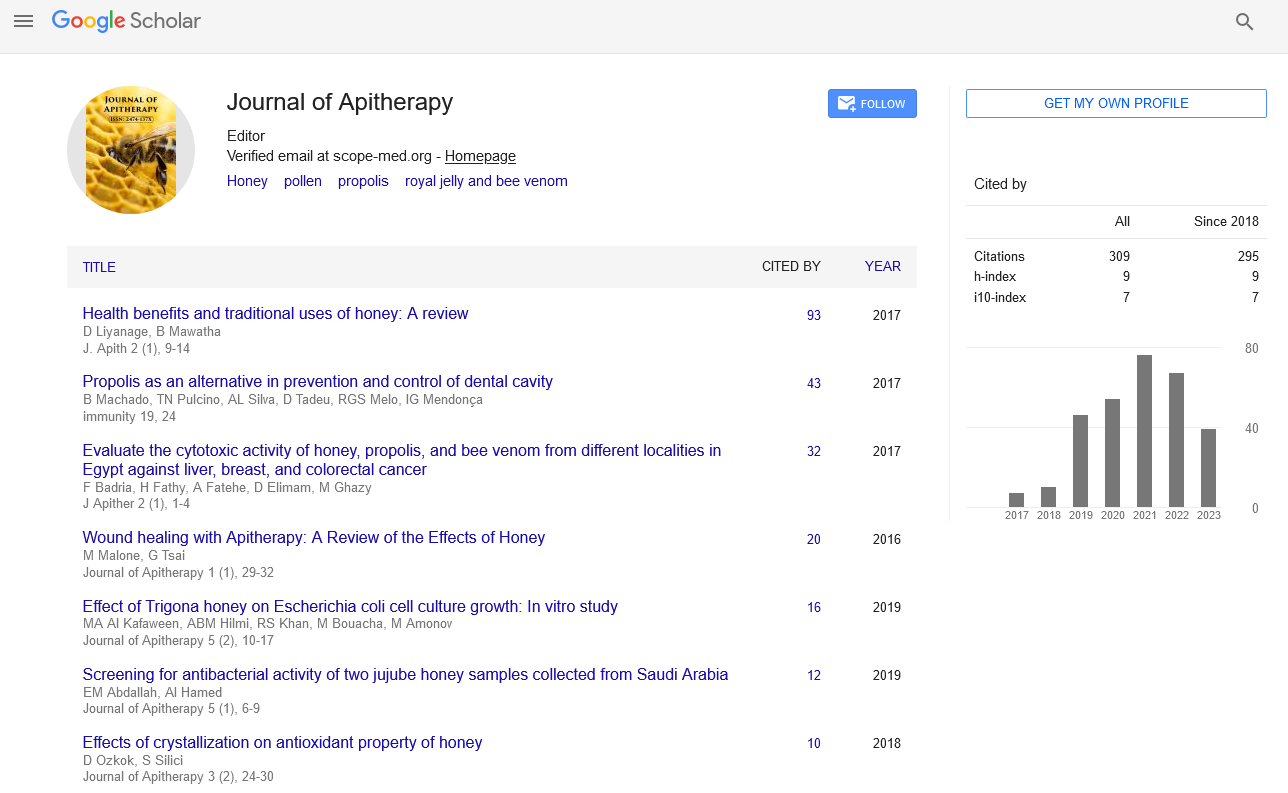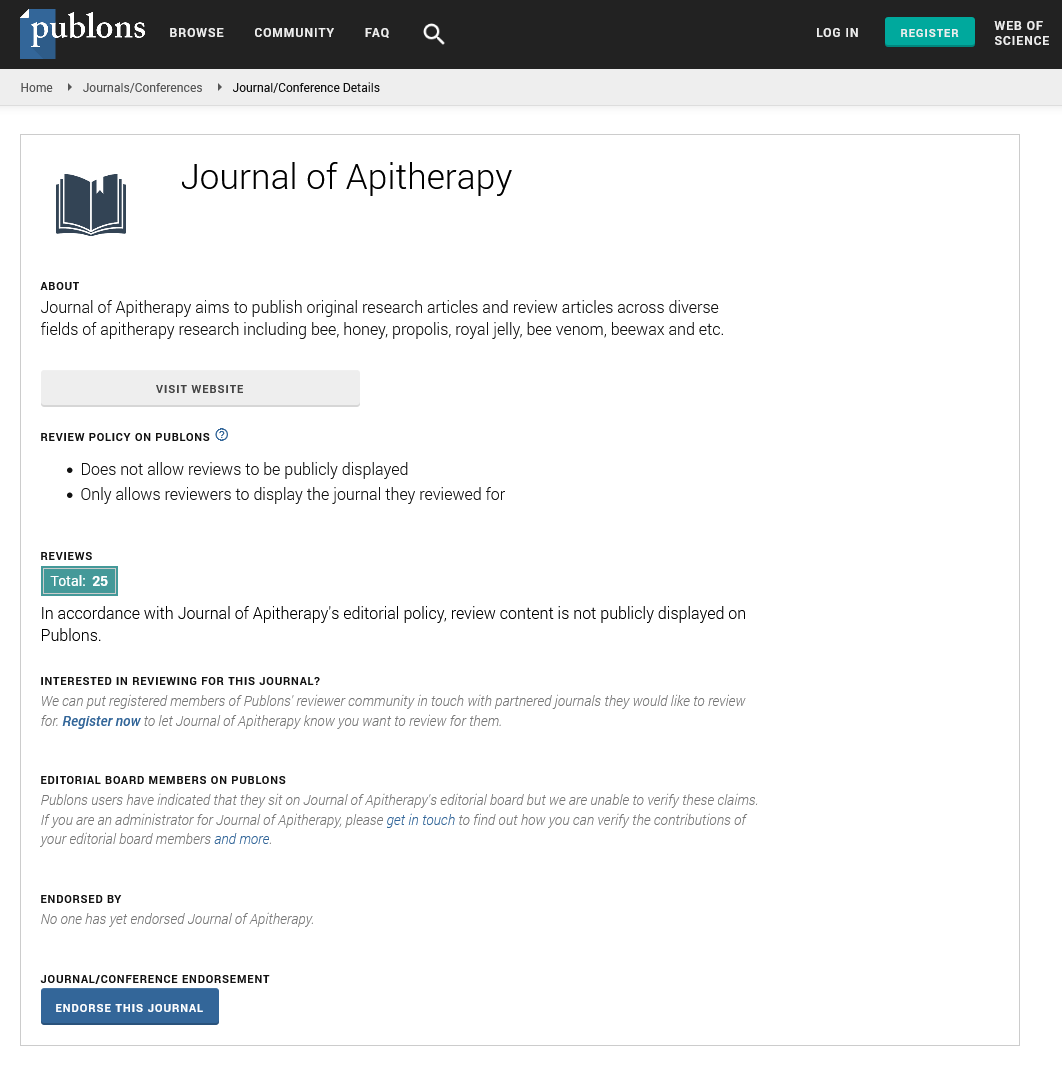Commentary - Journal of Apitherapy (2022)
The Stingless Bee Honey Uncovered Range of Medicinal Benefits
Gustavo Pessin*Gustavo Pessin, Department of Natural Sciences, Pará University, Belém, Brazil, Tel: gre.vto@nisnep.ovatsug,
Received: 02-May-2022, Manuscript No. JAPITHERAPY-22-68145; Editor assigned: 04-May-2022, Pre QC No. JAPITHERAPY-22-68145 (PQ); Reviewed: 19-May-2022, QC No. JAPITHERAPY-22-68145; Revised: 24-May-2022, Manuscript No. JAPITHERAPY-22-68145 (R); Published: 02-Jun-2022
Description
Compared to honey, stingless bee honey Apis mellifera has a distinctive flavour and sour taste. Rural residents are becoming more interested in raising stingless bees to suit the increased demand for raw honey and honey-based goods. Numerous research on stingless bee honey have uncovered a range of medicinal benefits for use in treating wounds. These include moisturising, anti- inflammatory, anti-bacterial, and antioxidant qualities that are connected to wound healing. Researchers from all over the world are interested in the creation of stingless bee honey for wound healing applications, such as integration into hydrogels. Because it overcomes the drawbacks of raw honey, such as its high viscosity, stickiness, and tendency to form sugar crystals, honey powder is being utilised more frequently in the food, cosmetic, and pharmaceutical industries. It is crucial to understand whether honey powders maintain the qualities of raw honeys. Stingless bees are a valuable resource that helps many natural ecosystems maintain their plant diversity and meet the expanding agricultural need for pollination. Stingless beekeeping is still mostly an informal activity in poor nations, technical expertise is limited, and management procedures are not standardised. In order to evaluate the effects of specific management approaches on productivity and economic profits from the commercialization of stingless bee products, The Western honey bee, Apis mellifera, is the focus of most of our knowledge regarding the social behaviour and genomes of bees and other social insects. However, the genus Apis is a highly derived branch with fewer than twelve species, four of which have been genomically described. In comparison, just one Melipona species’ complete genome sequence has been made public for the likewise highly eusocial but taxonomically and physiologically more diversified Meliponini. When identifying and categorising species, humans use a combination of morphological, sensory, utilitarian, cultural, and ecological characteristics. A wealth of knowledge on the identifying and categorising strategies used by cultures across the globe is available because to ethnotaxonomy. In order to compare the traits used in taxon descriptions and to analyse the degree to which those traits are represented, additional study is still required. Due to their practical and cultural significance, stingless bees are a diverse collection of social insects that have been extensively investigated from an ethnobiological standpoint. Through the selling of honey and other bee products, stingless beekeeping offers new potential to raise the earnings of many Malaysian households. Although Heterotrigona itama is one of the stingless bee species that is most frequently cultivated, little is known about its behaviour. In order to better understand how H. itama exploits food sources, we conducted this investigation to determine the ideal nectar sugar concentration for bees. According to reports, honey produced by stingless bees does not meet the requirements for honey’s quality. Bees are essential to many different habitats and to the pollination of crops. There have been numerous reports in recent years showing a global fall in bee populations. Finding more precise forecasting models can help with both knowing bees’ typical behaviour and potentially harmful conditions. Honey is an old therapy for treating infected wounds, and it’s becoming increasingly relevant as germ resistance to standard antibiotics grows. Incision, excision, burn, and dead-space wound models in rats were used to investigate the wound-healing efficacy of Acacia honey.
Copyright: © 2022 The Authors. This is an open access article under the terms of the Creative Commons Attribution NonCommercial ShareAlike 4.0 (https://creativecommons.org/licenses/by-nc-sa/4.0/). This is an open access article distributed under the terms of the Creative Commons Attribution License, which permits unrestricted use, distribution, and reproduction in any medium, provided the original work is properly cited.







